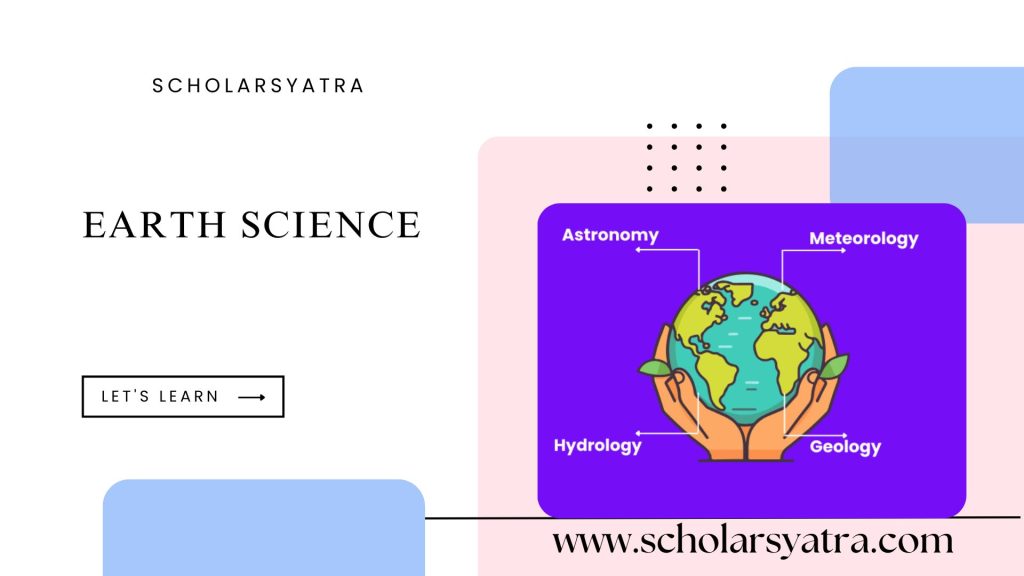Aromatic Nitro Compounds

Compounds in which the nitro group ( -NO2) is directly bonded to the benzene (aromatic) ring are called aromatic nitro compounds or simply nitroarenes. These are also regarded as nitro derivatives of arenas. Introduction to Aromatic Nitro Compounds Aromatic nitro compounds are a significant class of organic molecules characterized by one or more nitro groups […]
All About Earth Science

Explore the importance of Earth Science and its branches. Learn how geoscience impacts climate change, resource management, and disaster preparedness.
Aliphatic Nitro Compounds

Aliphatic nitro compounds are organic compounds that contain one or more nitro groups (-NO₂) attached to an aliphatic carbon atom. These compounds are known for their diverse applications in organic synthesis and industrial processes. Aliphatic Nitro Compounds Compounds in which the nitro group( – NO2) is directly bonded to the carbon atom of an alkyl […]
Ethanol (Ethyl Alcohol)

Ethanol, or ethyl alcohol, is a simple aliphatic alcohol with the chemical formula C₂H₅OH. Ethanol (Ethyl Alcohol) is a colorless, volatile, and flammable liquid with a distinct odor and is widely used in various industrial, medicinal, and recreational applications. Due to its versatility, ethanol is one of the most important alcohols in the chemical industry and […]
Science Behind Phenol Peel

When it comes to powerful skin treatments that deliver lasting results, few are as effective as a phenol peel. Also known for its intense rejuvenating effects, this deep chemical peel has the potential to dramatically improve the appearance of deep wrinkles, acne scars, and pigmentation issues. But what exactly is a phenol peel, and how […]
Phenol (Carbolic Acid)

Introduction to Phenol Phenol, also known as carbolic acid, is an organic compound that belongs to the class of aromatic compounds. This aromatic molecule consists of a hydroxyl group (-OH) bonded to a benzene ring. Its chemical formula is C₆H₅OH. Phenol is a white crystalline solid that is slightly soluble in water and has a […]
Combinational Logic

A combinational circuit, also called a combinational logic circuit, is a digital electronic circuit whose output is determined only by present inputs. In other words, a combinational circuit is a digital logic circuit whose output depends only on the present input values and does not depend on any feedback or previous input or output values. Introduction to […]
Industrial Preparation of Alcohol

The industrial preparation of alcohol, specifically ethanol (C₂H₅OH), is widely used across various industries, including the beverage, pharmaceutical, and chemical sectors. It is carried out mainly through two processes: fermentation and synthetic methods. Both processes are chosen based on desired purity levels, production scale, and cost considerations. This article provides an in-depth overview of the […]
Alcohol and Its Types

Alcohols are a group of organic compounds characterized by one or more hydroxyl (-OH) groups attached to a carbon atom in a hydrocarbon chain. The general formula for an alcohol is R-OH, where “R” represents an alkyl group (a chain of carbon and hydrogen atoms). They are used as sweeteners and in making perfumes, are […]
Haloarenes

Haloarenes, also known as aryl halides, are aromatic compounds where one or more hydrogen atoms in an aromatic ring (like benzene) are replaced by halogen atoms (fluorine, chlorine, bromine, or iodine). They have diverse chemical properties and are found in various applications ranging from organic synthesis to pharmaceuticals and agrochemicals. Due to the presence of […]
